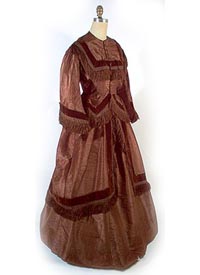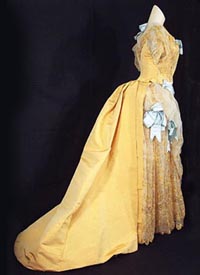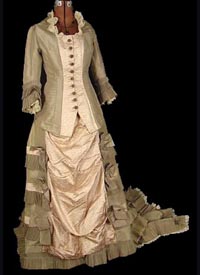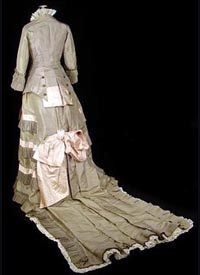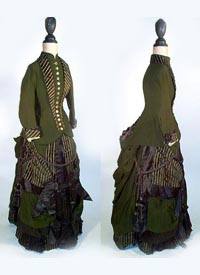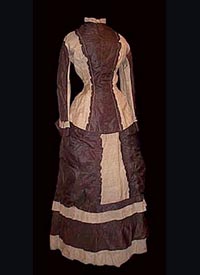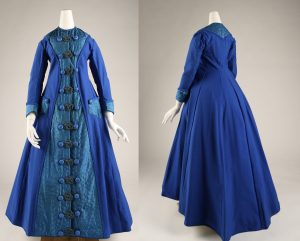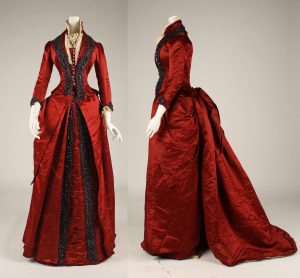In the early 1870s, shoulders returned to the position nature intended. The long-line cuirass bodice appeared in 1876–78. This reached to the hips in all its molded, whale-boned glory. Day bodices had high necklines and fitted sleeves with pleated or ruffled cuffs. The new look for evening was three-quarter-length sleeves with a square neckline.
In 1876, although the amount of skirt drapery remained constant (or even more complex), the bustle foundation disappeared. A very small hoop was worn, primarily to keep the mass of fabric away from the feet.
Fabrics were light in color and weight, with cotton, silk taffeta, and light wool favored. The problem of fitting outerwear over bustles was solved when three-quarter-length cloaks and Dolman mantles (a short capelet with wide sleeves) began to appear.
Written by The Vintage Fashion Guild
